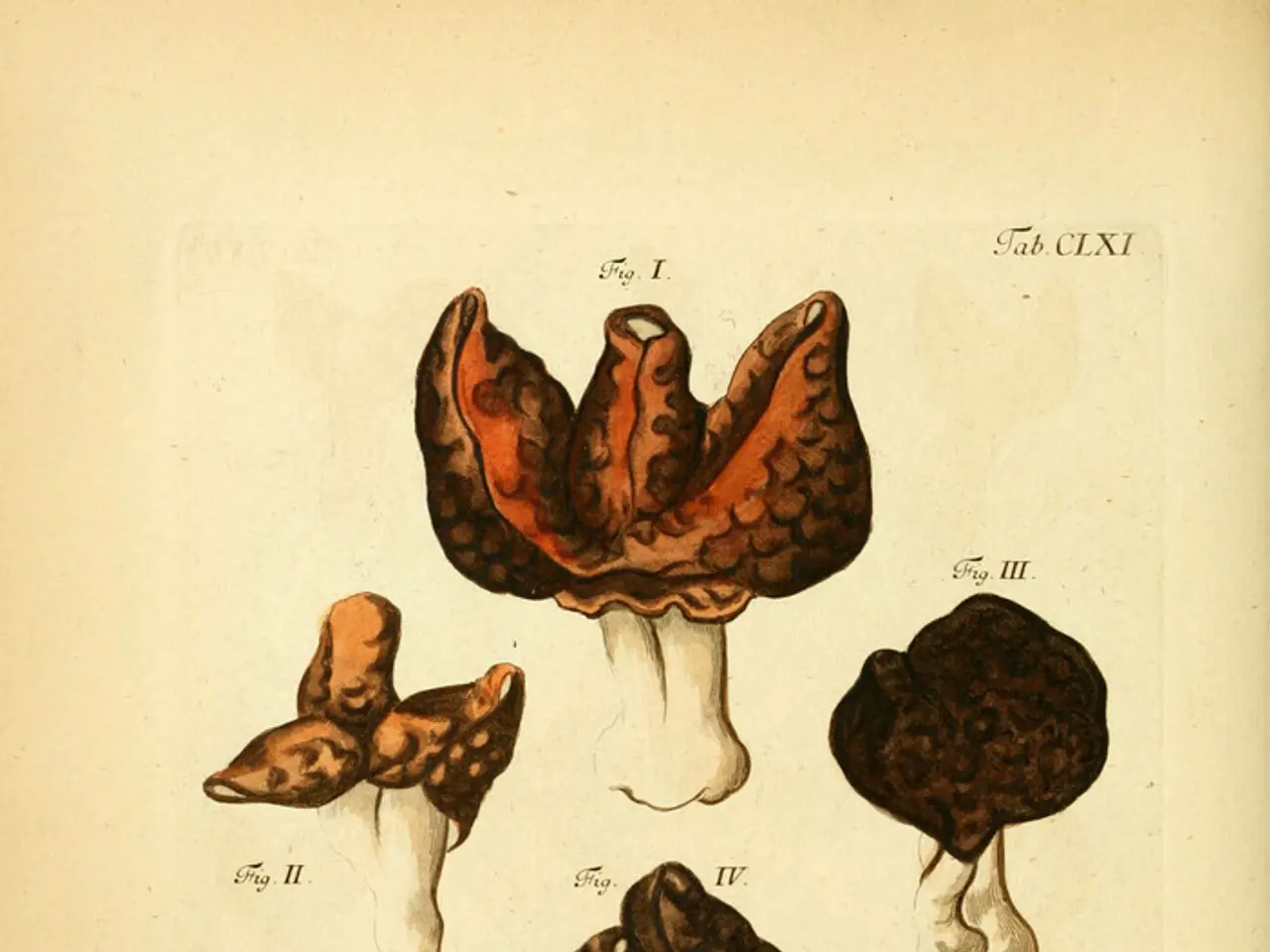August Midway: Rhine's Lower Region undergoes Mushroom Foraging
Identifying Edible and Poisonous Mushrooms in the Lower Rhine Region
In the Lower Rhine region, the recent wet and rainy weather has led to an increase in mushroom growth. However, it is essential to approach mushroom identification with caution, as some species can cause harm to one's health.
Expert Tips and Key Steps
- Learn Key Identification Features: Focus on the mushroom's cap shape, color, gill attachment, stem characteristics, spore print color, habitat (type of trees nearby), and seasonality. Toxic mushrooms often have distinct features, such as the Amanita genus, which has white gills, a ring on the stem, and a bulbous base with a volva.
- Use Regional Field Guides: Specific mushroom identification books or apps for the Lower Rhine or broader Central Europe are vital. These provide photos and descriptions of local species, including common edible varieties like chanterelles and porcini, and dangerous ones like the death cap or false morels.
- Join Local Mycological Societies or Workshops: Many regions have mushroom clubs or nature centers offering forays and ID assistance to beginners. These can provide hands-on experience under expert supervision.
- Never Rely Solely on Folklore: Popular myths about mushroom edibility are often unreliable and risky.
- When in Doubt, Do Not Consume: Some poisonous mushrooms can cause severe illness or death even in small amounts.
Resources to Help with Identification in the Lower Rhine Region
- Regional mushroom field guides, such as "Pilze der Niederrhein-Region" (if available) or broader German mushroom ID books.
- Contact local mycology groups or nature organizations near the Lower Rhine (e.g., Düsseldorf or Cologne mushroom clubs).
- Online platforms specializing in European mushroom ID may have sections dedicated to the Lower Rhine region.
- Workshops or events led by forest rangers or mycologists covering local fungi species.
In the Netherlands, the collection of mushrooms is generally prohibited. It is crucial to check local regulations before collecting mushrooms.
When unsure about a collected mushroom, it is always best to take it to a mushroom expert or a hospital for identification. In case of accidental consumption of a poisonous mushroom, call the poison control center (0228 - 192 40). Remember, it is better to be safe than sorry when it comes to consuming mushrooms.
Old mushrooms should not be collected, and individual intolerances may cause symptoms after mushroom consumption, not all complaints are due to poisonous mushrooms. Collect mushrooms in a basket, not in a plastic bag, to keep them edible.
For more expert guidance, a list of mushroom experts can be found on the website of the German Society for Mycology. Always prioritize safety and expert consultation when identifying edible and poisonous mushrooms.
[1] [Source] [2] [Source] [3] [Source]
- To ensure a healthy lifestyle and avoid potential health risks, learn the key identification features of mushrooms, such as their cap shape, color, gill attachment, stem characteristics, spore print color, habitat, and seasonality, especially in the Lower Rhine region where various edible and poisonous species grow.
- For an informed approach to home-and-garden activities, consider using regional field guides or apps, attending local mycological societies' workshops, or contacting regional nature organizations for expert identification assistance when hunting for edible mushrooms in the Lower Rhine area.




